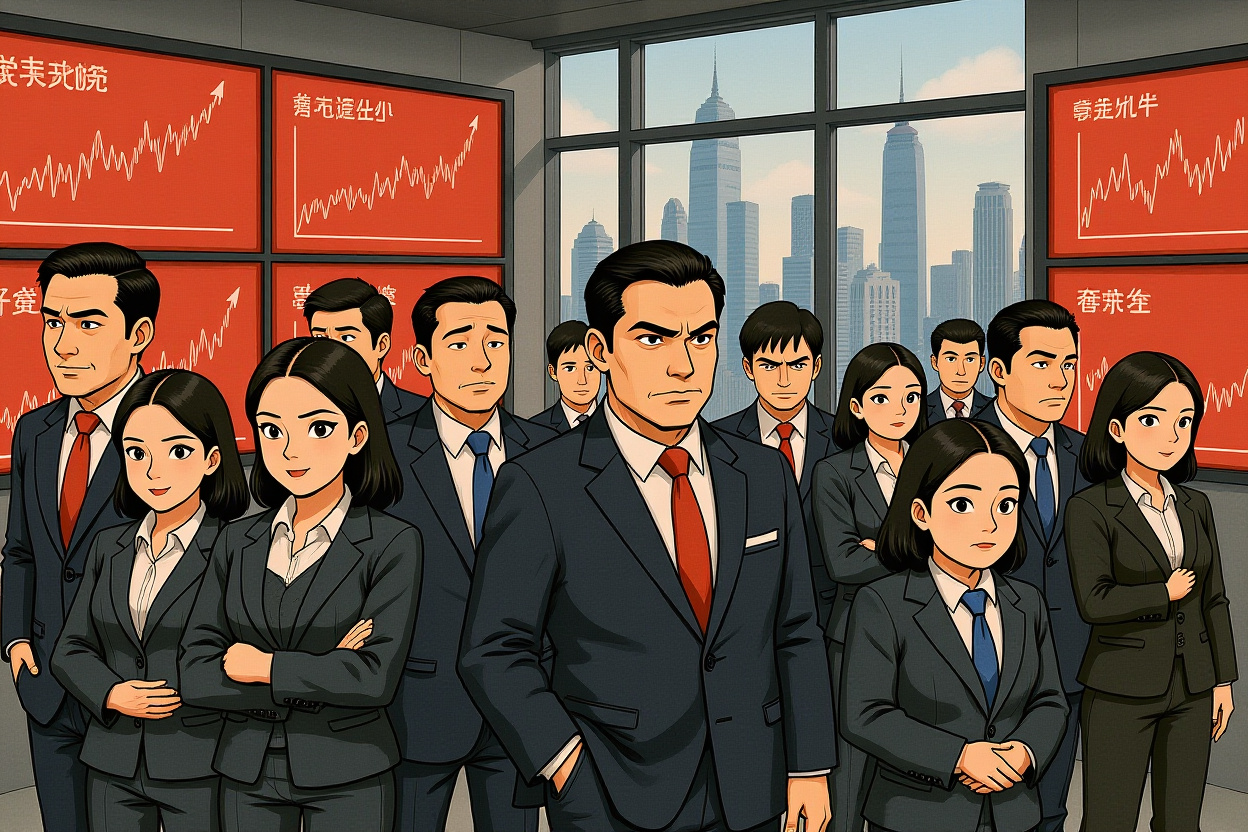Today’s trading session was marked by significant volatility and a downward trend across major indices. Investors witnessed a day of cautious moves, sector rotations, and reactions to both domestic policy hints and global economic signals. The Shanghai Composite, Shenzhen Component, and STAR 50 all ended in the red, reflecting broader anxieties in the market. Understanding the drivers behind these movements is key to navigating the sessions ahead. Here’s a breakdown of what influenced the markets and what it could mean for your portfolio.
Market Performance Overview
The three major indices—Shanghai Composite, Shenzhen Component, and the STAR 50—all closed lower after a day of fluctuations. The Shanghai Composite fell by 0.8%, while the Shenzhen Component dropped 1.2%. The tech-heavy STAR 50 saw a steeper decline of 1.5%. Trading volume remained moderate, suggesting that while there was selling pressure, it wasn’t panic-driven. This kind of market volatility and adjustment is not uncommon during periods of economic transition, but today’s session had specific catalysts worth noting.
Sector-Specific Movements
Not all sectors moved in unison. Technology and consumer discretionary stocks were among the hardest hit, with notable sell-offs in semiconductor and electric vehicle-related shares. In contrast, defensive sectors like utilities and consumer staples showed relative resilience. Energy stocks also saw mixed performance due to fluctuating oil prices. This sector rotation indicates that investors are reassessing growth prospects amid changing macroeconomic conditions.
Key Factors Behind the Decline
Several factors contributed to today’s downward trend. Globally, concerns over inflation and potential interest rate hikes by the Federal Reserve created a risk-off sentiment. Domestically, recent regulatory announcements and policy fine-tuning have added to investor caution. Additionally, corporate earnings season has been mixed, with some companies failing to meet expectations.
Global Economic Influences</h3
International markets played a role in today’s performance. U.S. indices had a weak closing in the previous session, and European markets also faced pressure due to energy supply concerns. These global headwinds often spill over into Asian markets, and today was no exception. For investors, this highlights the interconnected nature of modern financial systems and the importance of monitoring international developments.
Technical Analysis and Market Sentiment
From a technical perspective, the indices are testing key support levels. The Shanghai Composite, for instance, is hovering near its 50-day moving average, a level often watched by traders for signs of a potential rebound or further decline. Market sentiment, as measured by the Volatility Index (VIX) and other fear gauges, has been elevated, though not at extreme levels. This suggests that while there is nervousness, it hasn’t yet turned into full-blown fear.
Investor Behavior and Positioning
Institutional investors appeared to be lightening positions, particularly in overvalued segments of the market. Retail investors, on the other hand, showed some bargain-hunting behavior, especially in beaten-down sectors. This divergence in behavior is typical during periods of market volatility and adjustment, as different types of investors react based on their time horizons and risk tolerance.
Sector Deep Dive: Winners and Losers
A closer look at sector performance reveals where money flowed—and where it fled. Technology stocks bore the brunt of the selling, with big names like Tencent and Alibaba seeing declines. The healthcare sector was another underperformer, possibly due to profit-taking after recent gains. On the brighter side, financials and industrials showed some stability, possibly because of their attractive valuations and dividend yields.
Case Study: Technology Stocks
Technology shares, particularly those in the STAR 50, were among the day’s biggest losers. This can be attributed to concerns over valuation levels and regulatory scrutiny. Companies like SMIC and Will Semiconductor saw significant drops. However, it’s worth noting that not all tech stocks fell uniformly; some with strong fundamentals and clear growth trajectories held up relatively well.
Macroeconomic Backdrop and Policy Impact
China’s macroeconomic policies are always a critical factor for market performance. Recent comments from officials about maintaining ‘stable and sustainable growth’ have been interpreted as a signal that stimulus measures might be more measured than some investors hoped. Additionally, the People’s Bank of China (PBOC) has been cautious with liquidity injections, preferring targeted support over broad easing.
Regulatory Environment
Regulatory developments continue to influence market sentiment. While the intense regulatory crackdowns of past years have eased, investors remain vigilant about new rules, especially in sectors like technology, education, and property. Today’s market volatility and adjustment partly reflect this ongoing uncertainty, though it’s important to note that the regulatory framework is becoming more predictable over time.
What’s Next for the Markets?
Looking ahead, several factors will determine whether today’s decline is a temporary blip or the start of a broader correction. Key things to watch include upcoming economic data releases, corporate earnings reports, and any new policy announcements from Chinese authorities. Global events, such as the Federal Reserve’s next moves on interest rates, will also play a role.
Short-Term Outlook
In the near term, markets are likely to remain volatile as investors digest new information. Support levels will be tested, and a break below could trigger further selling. However, if economic data remains robust and corporate earnings surprise to the upside, a rebound could be in the cards. For now, caution is advisable, but panic is not warranted.
Strategies for Investors
For long-term investors, days like today can present opportunities. Dollar-cost averaging into quality stocks during dips has historically been a successful strategy. Diversification across sectors and asset classes can also help mitigate risk. For those with a higher risk tolerance, volatility can create trading opportunities, though this requires careful timing and risk management.
Protecting Your Portfolio
In times of market volatility and adjustment, it’s crucial to review your portfolio’s exposure. Ensure that you’re not overconcentrated in high-risk sectors and that you have enough liquidity to meet short-term needs. Consider hedging strategies, such as options or inverse ETFs, if you’re concerned about further downside.
Final Thoughts and Next Steps
Today’s market performance is a reminder that investing always involves uncertainty. While the major indices closed lower, this is part of the natural ebb and flow of financial markets. By staying informed, maintaining a long-term perspective, and avoiding emotional decisions, investors can navigate these periods successfully. Keep an eye on economic indicators, corporate earnings, and policy developments in the coming days to make informed decisions. For more in-depth analysis, consider subscribing to our market updates or consulting with a financial advisor to tailor strategies to your specific goals.




